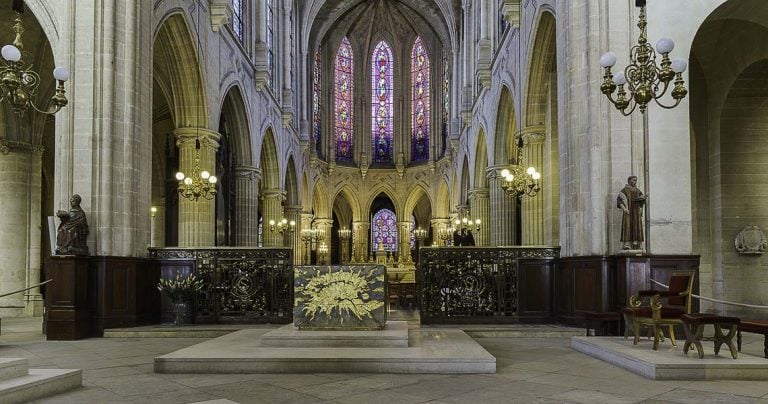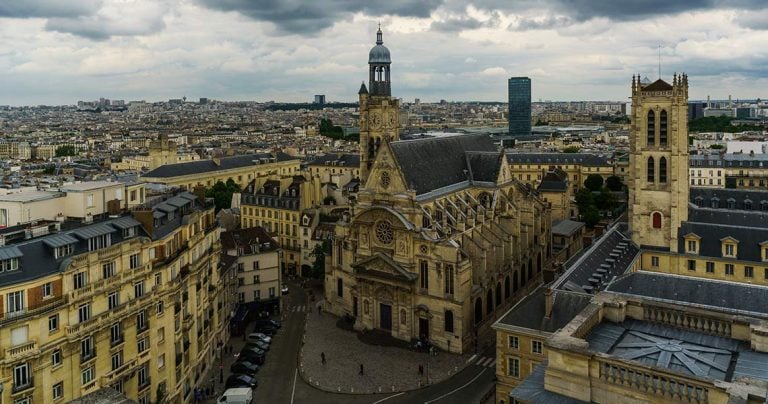Collégiale Notre-Dame de Beaune
Located in the heart of the old town, the Collégiale Notre-Dame de Beaune is one of the great Romanesque churches of Burgundy. It is only a few minutes walk from Hôtel-Dieu de Beaune, Beaune’s other main tourist attraction. The church is often referred to as the Daughter of Cluny because of its similarity to the Abbey of Cluny.
The church’s building began in the middle of the 12th century. Romanesque churches tend to be rather plain by French standards. The Notre Dame Collegiate Church did not gain any Gothic beautifications until after a fire in the 13th century when an open porch at the west end, flying buttresses to the nave and side chapels were added. The dome and lantern came in the 16th century.

Inside it is a large, rather plain church with a long tall nave with fluted pillars, a small triforium above, and plain glass clerestory windows. But this plainness hides many treasures.
Just behind the altar and surrounding the choir stalls, you can admire a collection of five well-preserved Flemish tapestries (approx. 6×2 metres each). They date back to the 15th century and tell the story, in nineteen scenes, of the life of the Virgin Mary.
This year (2021), viewing the tapestries is free of charge in the collegiate choir between May 20 and October 31, excluding lunch hour (1-2 pm) and religious services.
The murals or frescoes of the Saint-Léger chapel, located on the left side as you enter the church, were made for Cardinal Jean Rolin between 1470 and 1474. Completed probably by Pierre Spicre, a Burgundian painter of Dutch origin, they decorate three walls of the chapel. The eastern wall depicts the martyrdom of St. Stephen, the western wall describes the resurrection of Lazarus, and the north wall shows Saint Martha and Saint-Magdalene.

Appreciating the stories told by the tapestries and murals requires a little homework. I found the following articles on the tapestries and murals to be quite illuminating but too detailed to include here.
Beaune was initially a stopover for pilgrims on their way to Jerusalem. However, with the acquisition of a Black Madonna in the 12th century, Beaune soon established itself as a significant centre of pilgrimage in its own right. Christians came from all over Europe to pray to a statue of the Virgin and child, which in reality was a multi-coloured piece of wood that had darkened over time.

In 1272, a fire devastated much of Beaune, and major works were needed to rebuild the Church. On this occasion, builders introduced Gothic art to the building, and huge Gothic windows replaced the Roman ones.
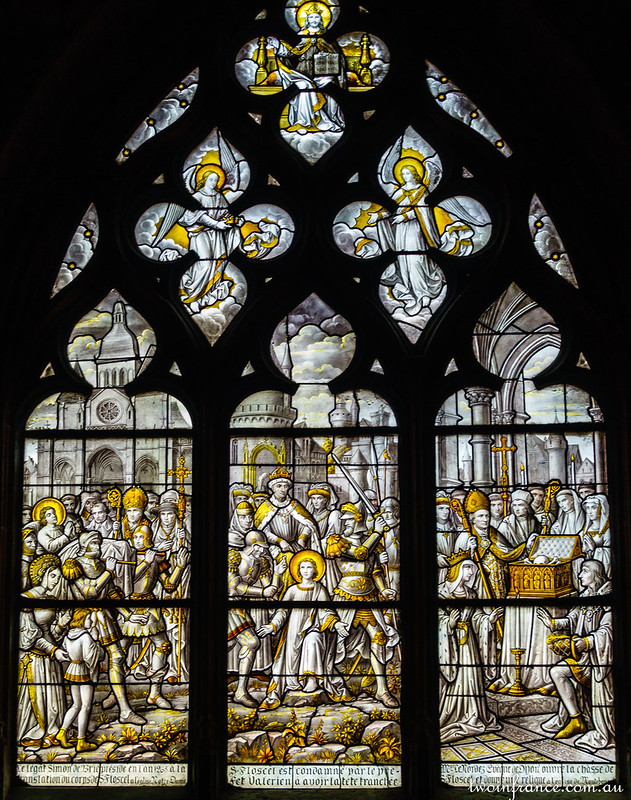
From the 13th to the 16th centuries, several chapels were added on the aisles of the nave, corresponding to the desire of noble families to have their own private chapel. The original Gothic spire was replaced between 1580 and 1588 by a great imperial roof.
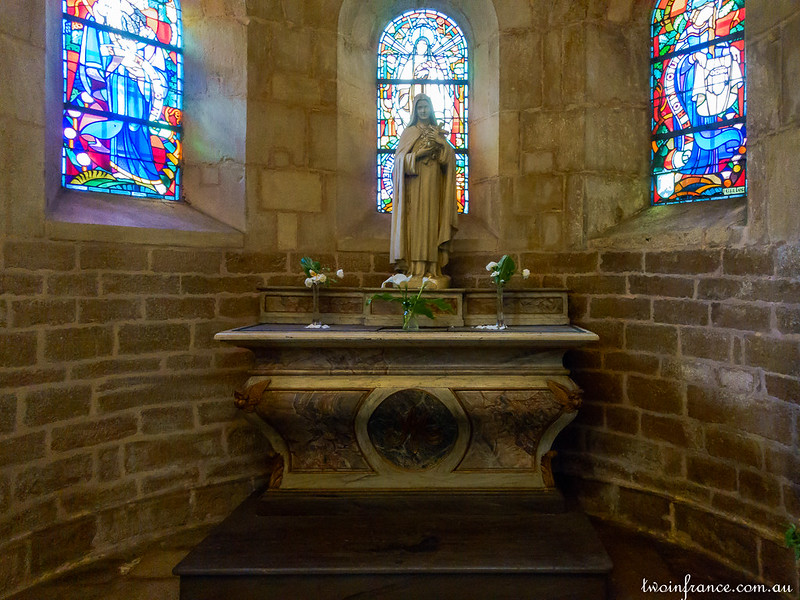
The first record of an organ in this church dates back to the 15th century. It has been rebuilt/replaced many times since then, the most recent being 1988.
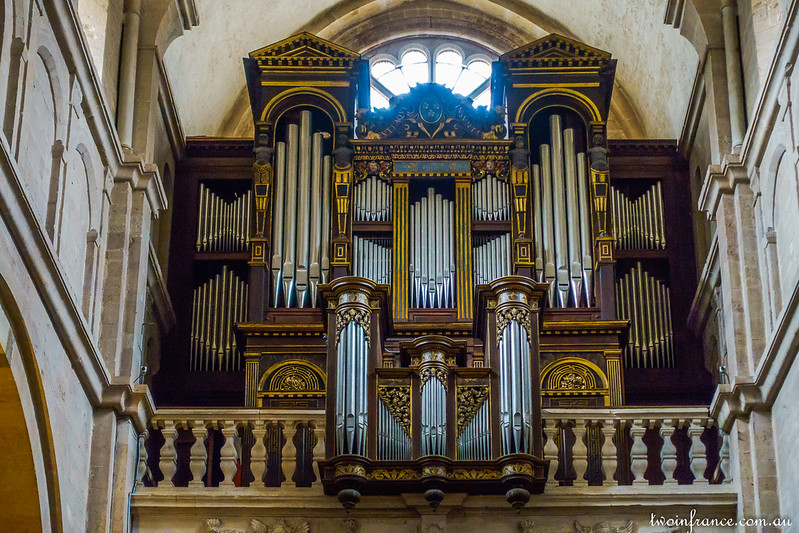
Classified as a historical monument in 1840 and registered in 1926, the church was granted Basilica status in 1958. Your visit to Burgundy should not miss this interesting historical monument.
Collégiale Notre-Dame de Beaune
Impasse Notre Dame, 21200 Beaune
+03 80 24 77 95
8.30 am -7.00 pm Everyday
Car: A6 from Paris. Train: TGV Paris to Dijon, TER to Beaune
Collégiale Notre-Dame Beaune




